On January 8-10, 2017 makers, professionals, families and people with disabilities gathered at the Technion in Haifa, Israel for a special event called TOM: Tikkun Olam Makers – an initiative of the Reut Institute in cooperation with the ROI community of The Schusterman Foundation. TOM events are 3-day make-a-thons, 72 hours of intense activity whose purpose is to bring together people with disabilities with people from design and technology backgrounds in order to develop solutions to answer the needs or challenges faced by people with disabilities. In this most recent event, staff from Beit Issie Shapiro (from the Ra’anana and Kalansua sites) contributed four challenges to the TOM community and participated in the groups’ activities providing professional support to the teams.
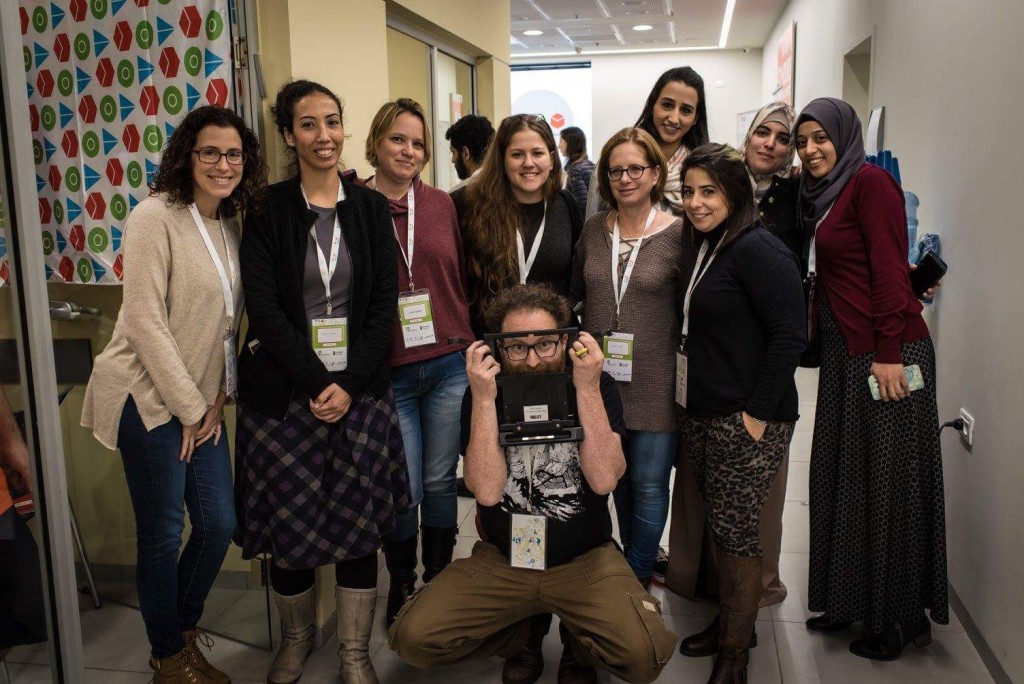
The Beit Issie staff (partial representation) with Matan Ninio, a maker
Wise Control\ by: Anat Lahav, physical therapist
N. is a boy who currently uses head switches with auditory scanning to work his communication device. We wanted to create a solution without the need for using mechanical switches because using these switches requires him to keep his head in a certain position to press them. Even when seated with proper trunk and head support we felt that mechanical switches were still not sufficient enough a solution as N. has additional motor limitations that complicate using his communication device.
Lior and Aviv, our amazing “makers” made N. a wearable device with movement sensors built in. Worn on the head, it senses N.’s head movements no matter his positioning. Using a special program with settings designed specifically for N., we can set how various head movements are recognized by the device and what commands they give to the computer. In essence, each head movement became its own “switch” so there is no need to press an actual switch.
After three incredible days we finished the makeathon with a working prototype, and solid hopes for continued use and improvement. We plan on continuing with this challenge, working out the bugs, and making the system useful for other students who may need such a set-up to use a computer or other electric device.
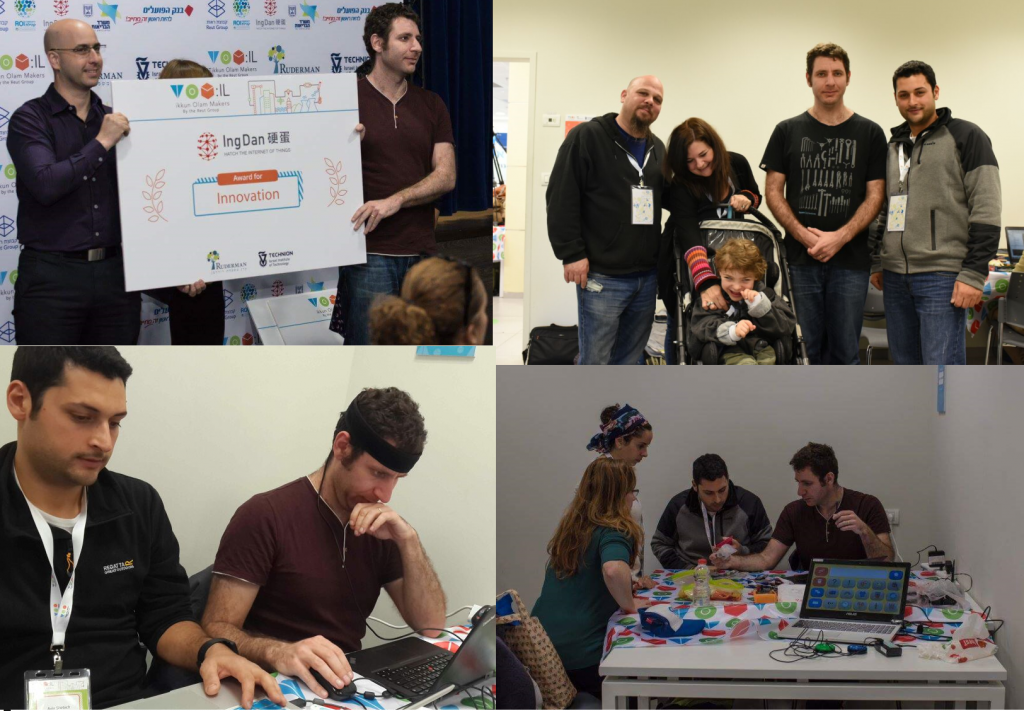
One Hand Crafting\ by: Noa Nitzan, occupational therapist
Our challenge was to find solutions for Ido, a 4th grade student with hemiplegic CP. Ido, an intelligent, energetic and social child, is independent in most things but requires assistance to cut with scissors and use a ruler or sharpener properly because he cannot stabilize the objects with his helper hand, due to limited motor function secondary to CP. Our group was made up of OTs, industrial designers, engineers and of course, Ido and his mom. It was fascinating to work together and think of solutions to try with Ido, remembering that our intention was also to provide these solutions for others with similar challenges.
Here are our solutions:
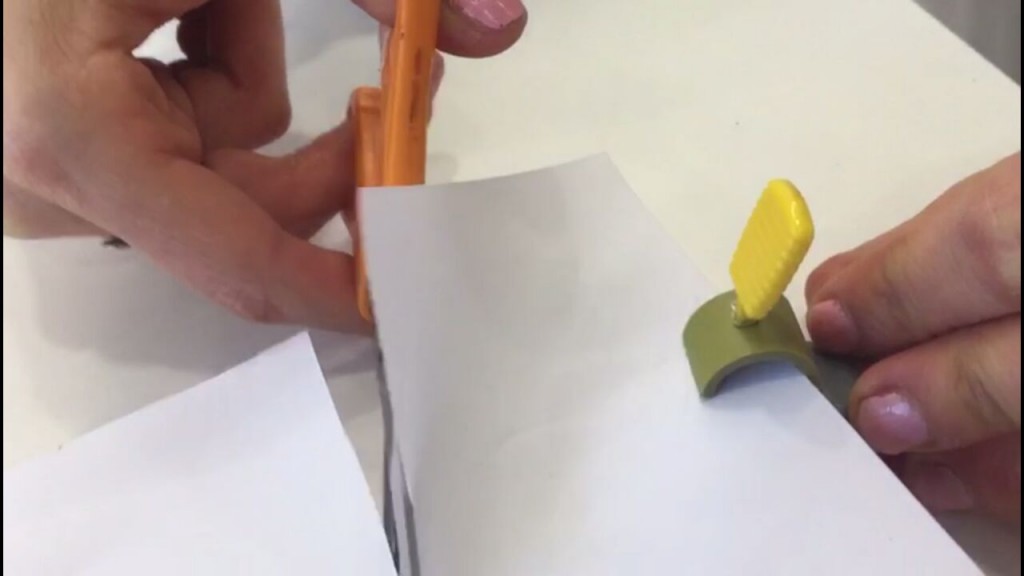
Cutting with scissors – a page gripper – a clip that slips like a ring on a finger of the helper hand and stabilizes the paper while cutting
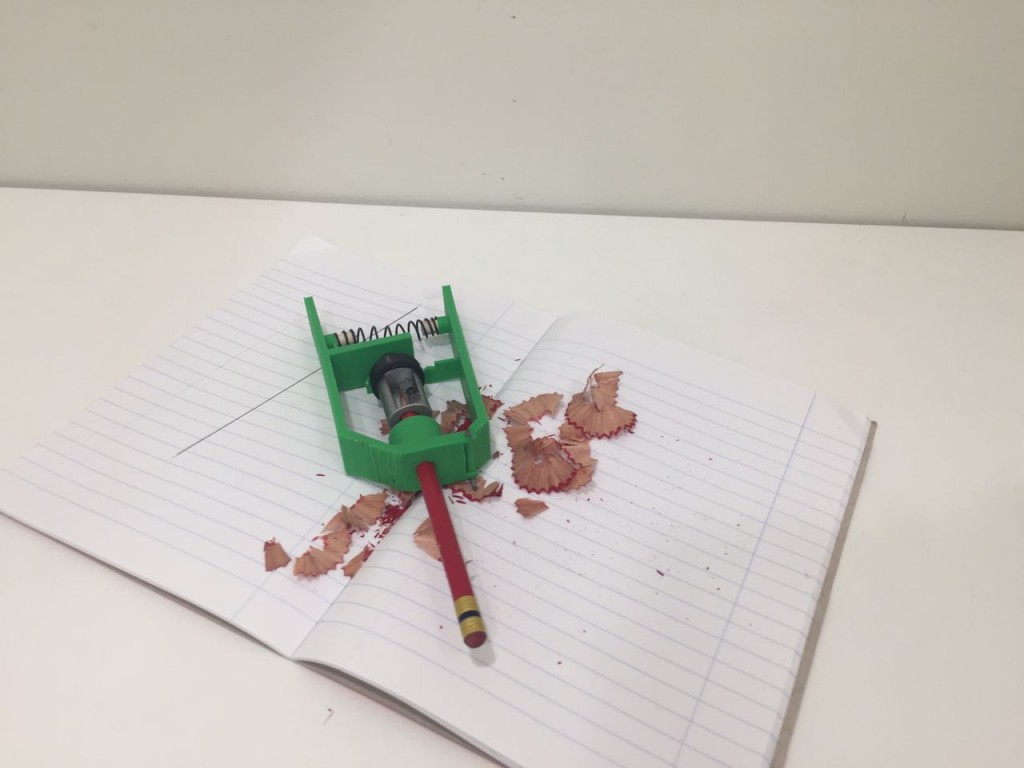
Pencil sharpener – a device that works using a griping motion to turn the sharpener, so that it can be performed with one hand
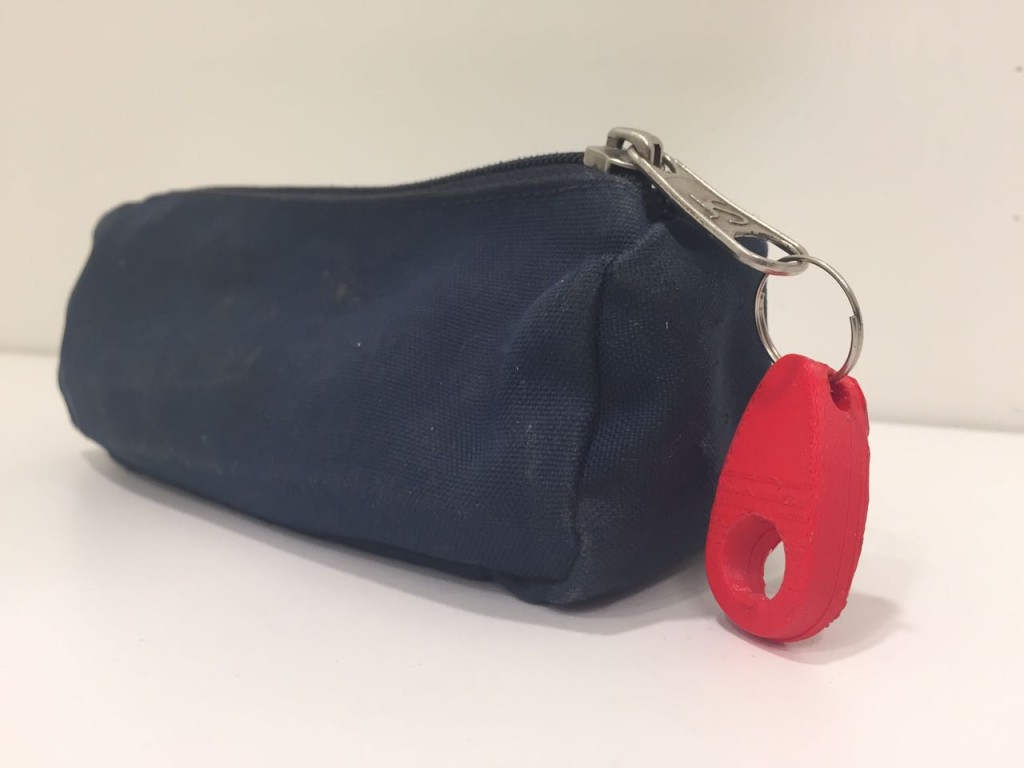
Marker opener – a little gadget attached the zipper of a pencil case. By putting the marker into the hole and positioning the cap against the edge of the hole, the device can be used to “pop” the cap off

Using a ruler – Using a magnetic sheet under the paper and a metal ruler keeps the ruler from moving while drawing lines
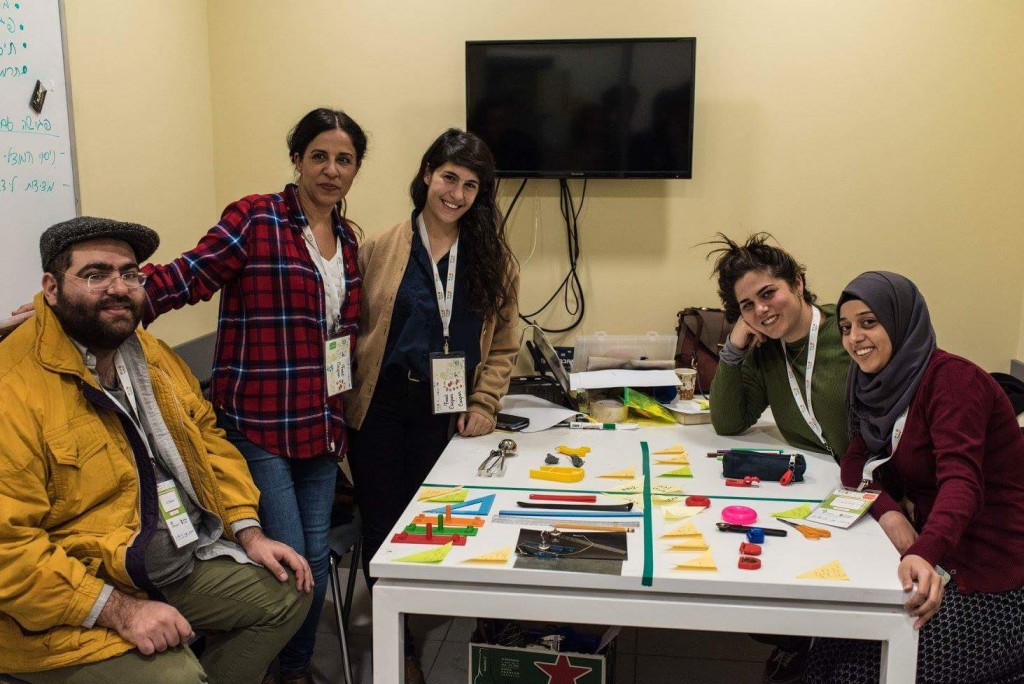
Sensory Eye Fix\ By: Racheli Blum, speech and language pathologist
Our challenge was to find a solution to allow the use of eye gaze systems in a preschool setting. Y., 3 years old, is a student in the Early Intervention Center at Beit Issie Shapiro. She has been using eye gaze to communicate since she was 1.5 years old. The challenge of using eye gaze systems in a preschool setting is two-fold. One, that the children change positions frequently throughout the day, requiring the device to be able to be used in many positions, including on the floor, and two, it is an expensive and fragile device being used in an environment where children are moving and playing, making protecting the device a necessity. It was important for us to find a simple solution that would be as user friendly as possible for the staff. Our team included therapists and makers, brainstorming together to find realistic solutions. Ilan and matan, our wonderful makers, developed a stable adjustable stand that can be used in three settings, seated on the floor, sitting in a chair, and standing in a stander. We are very excited with the prototype that was developed and we hope to duplicate it and adapt it for more children.
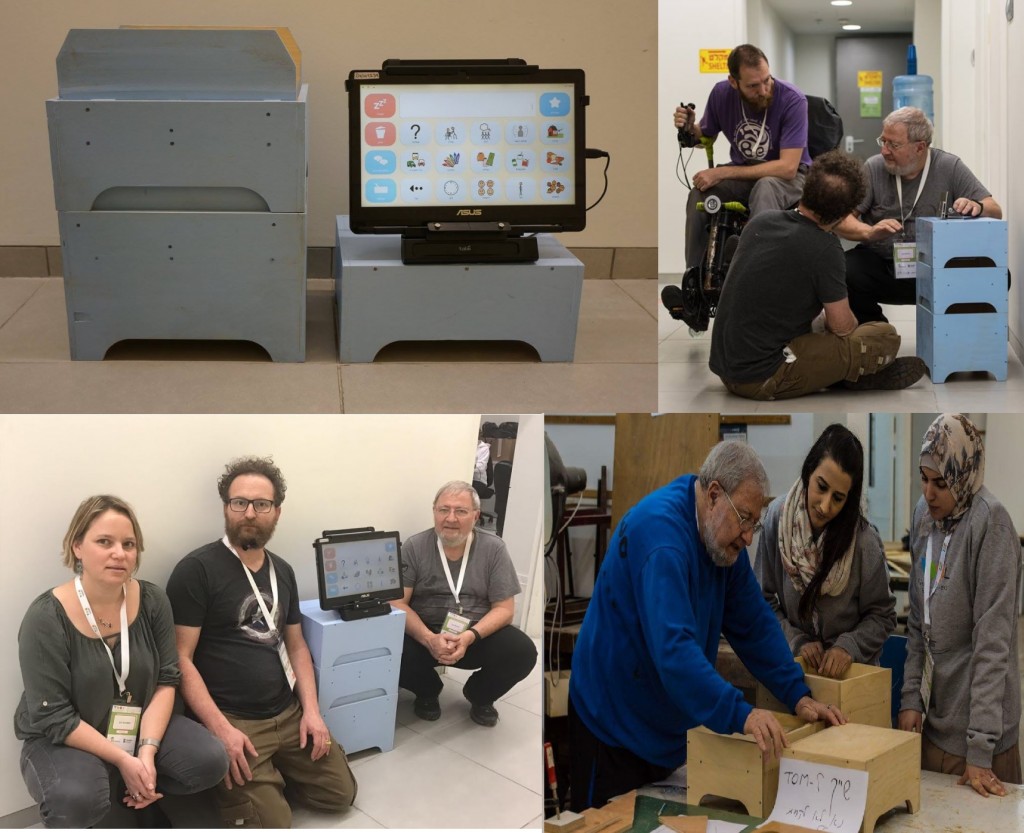
Plane Seat Assistance\ By: Roni Ken-Dror, physical therapist
Our challenge was to find a solution for children with severe motor challenges that require adapted seating support when travelling on an airplane. Currently the only option for children over 10 years old is to sit with assistance from their parents as aviation standards and airlines require approval of external devices meant to be anchored to the seat, and no such devices currently exist for older children. Thanks to our incredible makers, we created a wearable, an adapted vest that can be used to provide sitting support. The vest provides trunk support and prevents side flexion, or falling to the sides. It comes with an attachable neck cushion to provide head support, and a pummel to keep the thighs and knees apart. We hope that as a result of this vest more families will be able to take their children on holiday and fly knowing that their child can sit beside them, well supported and comfortable.
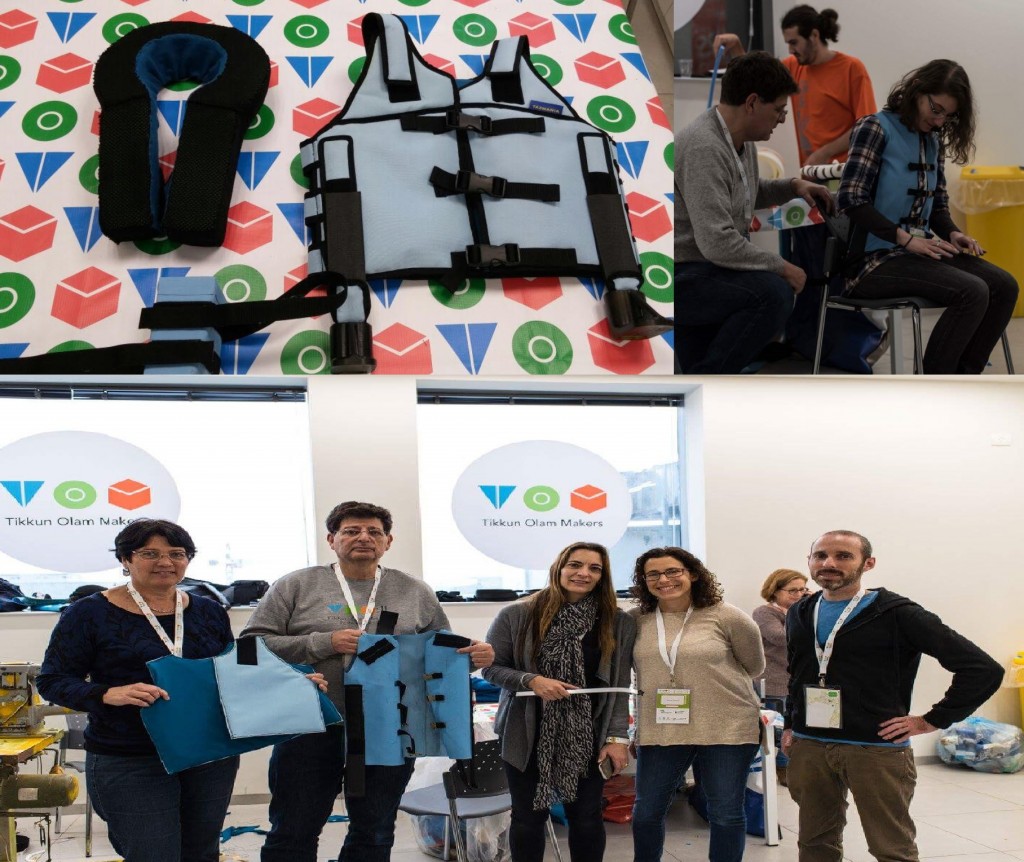
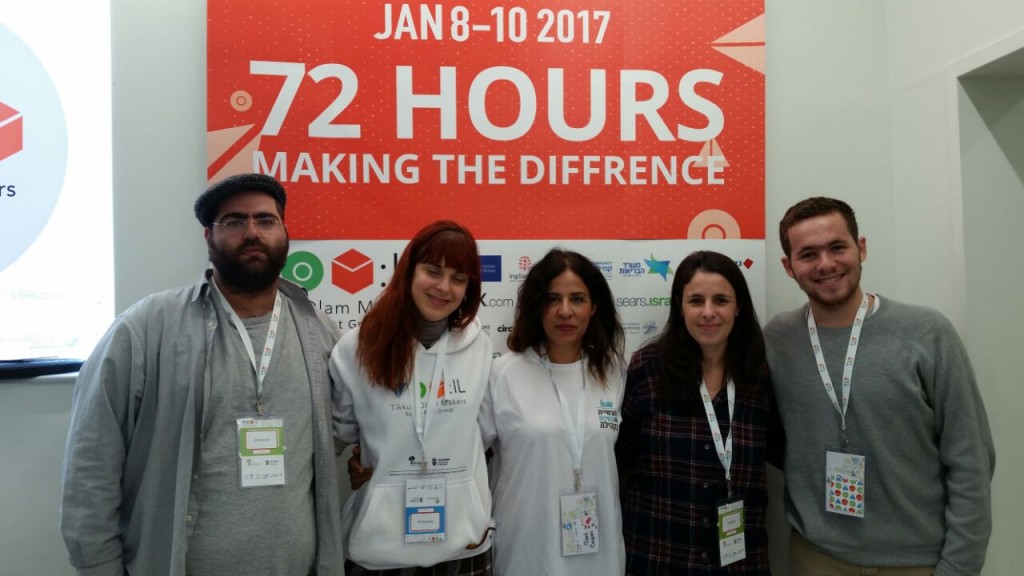
See you next year!



Leave a Reply